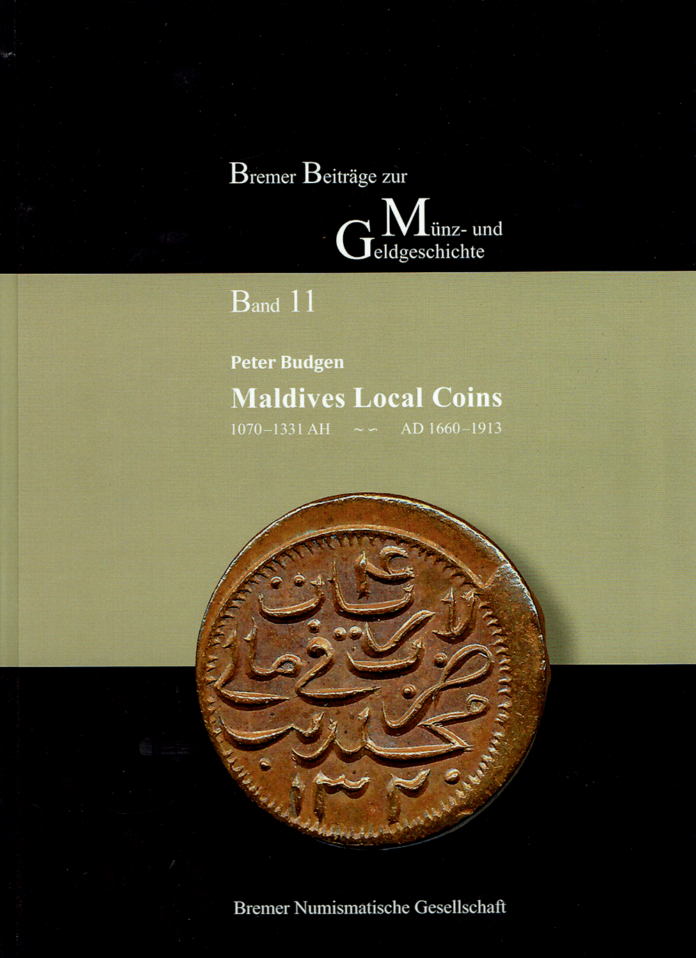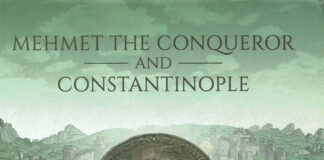
What do you think of when you hear the word Maldives? Of wonderful beaches and palm trees? Of ecological crises and luxury tourism? Let’s admit it, coins are at the very bottom of the list of things that come to mind when we think of the Maldives. And yet, these coins illustrate that the paradise of the Maldives isn’t without history, it has a past and these coins are testimonies to it.
The Author Peter Budgen
It isn’t obvious that an enthusiastic numismatist and collector chooses to study the coins of the Maldives. Even for Peter Budgen a crucial experience was needed to get started. He was triggered by a working stay on the islands. One day, he saw an old Maldivian coin that nobody seemed to know anything about. And that aroused his curiosity – in 1975. In the course of all the decades that have passed since then, he never lost this curiosity. In 2020, after studying the subject for almost half a century, Peter Budgen published his commented catalogue of Maldives local coins of the era between 1660 and 1913 as part of the Bremer Beiträge zur Münz- und Geldgeschichte.
The Book
If you’ve never had anything to do with the coins of the Maldives and perhaps don’t even know how to read Arabic, you will appreciate the book’s clear structure. It’s much more than a catalogue as there are numerous historical and numismatic remarks. In the first chapter dedicated to research history, you will find a meticulous list of old literature which is briefly described and reviewed. Whether it be the Islamic calendar or the three-page overview of Maldivian history, the author carefully thought about what his readers need to understand the catalogue.
In his numismatic overview – from cowries to the 20th century – he summarised the old literature and added his own thoughts on the subject. The author dedicated almost twice as much space to unusual issues such as star-shaped bronze larins as well as gold and silver coinage. After detailed considerations on coining material and minting techniques, the author briefly discusses legends and images depicted on the issues before he moves on to the catalogue.
The Catalogue
If you want to start collecting coins of the Maldives, you will be pleased with the historical introductions provided by the author for every ruler. In addition, there is a numismatic introduction, i.e. the author summarises the issues minted under that ruler.
This is followed by the catalogue. Every coin type has its own number. There are not only photographs but also drawings of the coins, which makes identifying them much easier. Budgen also gives inscriptions in Arabic and provides his readers with an English translation. Those who want to know more about it can find the most important Arabic names, words and numbers that appear on the coins of the Maldives in a table at the end of the book. Last but not least, the author lists the coin dies he knows of and helps his readers by providing additional pieces of information.
This means that even if you can’t read Arabic script, you will be able to identify coins of the Maldives by means of this catalogue without much effort!
One might wonder how often you actually have to identify a coin of the Maldives. But that would be the wrong question. After all, the very point of collecting and of numismatics is to deal with things that aren’t common. It is precisely the rare pieces that give the most interesting insights into our culture.
At first, I was amazed that there are coins on the Maldives in the first place, and then I wondered why they were needed on these paradisiacal islands. And that’s why I noticed that the Maldives haven’t always been a holiday destination, but an important stop for merchants in the Indian Ocean. Neither did I know that the Maldives were one of the world’s most important supplier of cowries, which were used as international currency. Now I’m curious. These islands have probably much more to offer than beaches, the sea and a sunstroke. Without Peter Budgen’s book, I would have never thought about that.
You can purchase the book at Bremer Numismatische Gesellschaft for the modest price of 39 euros. Considering the work and the love that went into this publication, this isn’t anything but a nominal fee.



